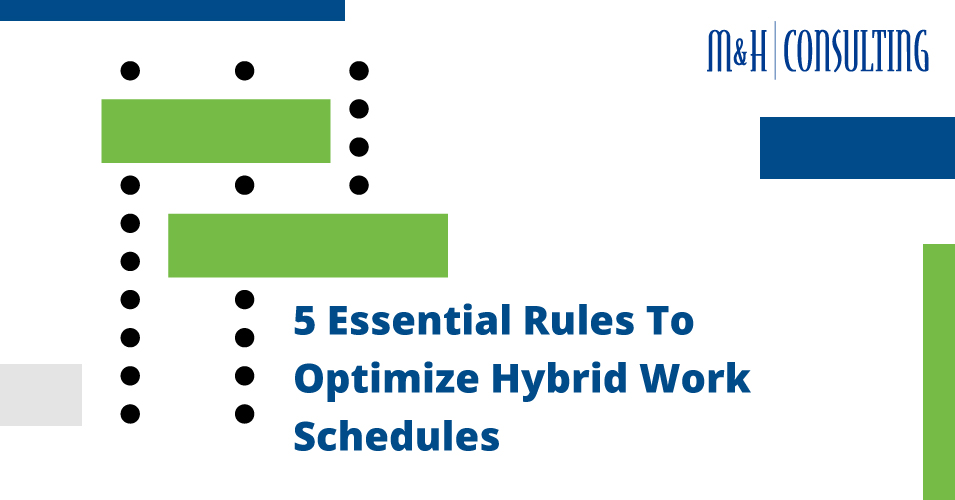Digital acceleration is happening all around us. However, with hybrid work models becoming the norm, business leaders must create ground rules to best match their organization’s digital endeavors.
According to Gartner, “COVID-19 caused 7 of 10 boards of directors to accelerate digital business, but accelerating digital requires a change in work habits, and the reality is that people don’t change their habits overnight.” Gartner’s research also found that “71% of HR leaders are more concerned about employee collaboration this year than they were before the COVID-19 pandemic.”
This acceleration of digital-first daily operational models can be overwhelming for both staff and management at first. However, with a few easy-to-follow ground rules, you and your company can be up to speed on the best hybrid work practices in no time.
So, in today’s blog, let’s explore our essential technical ground rules when establishing productive hybrid schedules.

1. Monitor Team & Individual Health
It has been a trying time for many. If your company has adopted a hybrid approach, it’s crucial that you closely monitor the overall mental health of your team, culture, and individuals.
Be sure to check in regularly with your employees, especially if they primarily work from home. It’s also important to foster good communication, company culture, and working relationships by regularly holding team engagement activities (outside of normal meetings).
While this can be a challenge to do remotely, in the age of digital communication, there are many applications and remote activities that you can put on the schedule to nurture team culture and individual mental health while working.
2. Encourage Digital Communication
It’s easier than ever to communicate with one another. With so many messaging, video conferencing, and project management platforms and applications at our disposal (many of them, for free or low costs), it’s essential to encourage digital communication and collaboration.
As a team leader, manager, or business owner, you’ll want to act as a leader in communication, this will help guide your staff when it comes to the “do’s” and “don’ts” of transparent communication on your team. While digital platforms certainly cannot replace in-person, face-to-face interaction, you can still use them to complete tasks and to share critical insight and information with one another.
Oh, and it’s also a lot of fun to send the latest and funniest memes to each other.
3. Set Consistent Expectations To Encourage Time Management
Expectations, such as deadlines, project milestones, and daily workloads should stay consistent for the most part. Time management can be difficult from home, especially starting out.
If your expectations and deadlines remain consistent, this allows your employees to successfully predict and plan their daily tasks.
4. Audit Your Task List
The hybrid nature of digital work needs to be streamlined. As a business leader, it’s important that you audit your staff’s daily task list, potentially eliminating outdated or unnecessary tasks, allowing your team to focus on the projects and milestones that matter most.
5. Conduct Routine Basic Cybersecurity Training
While cybersecurity has always needed to be prioritized within business infrastructure, digital acceleration has certainly upped the ante. For this reason, you should be conducting routine cybersecurity training and information sessions with your various teams on a regular basis.
With many businesses lacking sufficient cybersecurity protocols and training, it’s essential to train your employees on basic security practices such as two-factor authentication, regularly changing passwords, and identifying scam or malicious emails.
Categorised in: employee issues, remote employees, remote work, remote workers, Transformation
